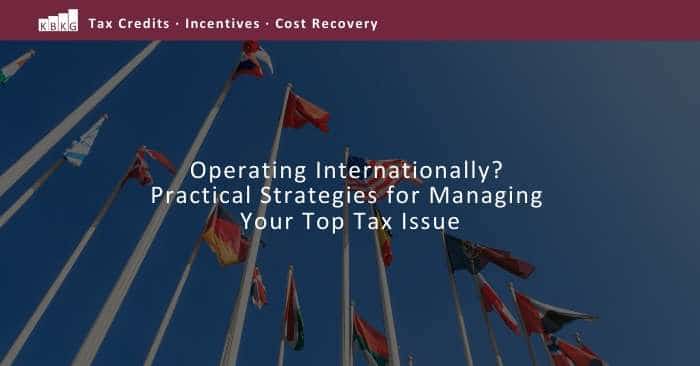It is no secret that many companies see overseas markets as a pillar of long-term growth strategies. Whenever a US business makes investments internationally or a foreign parent expands to the US market, company management is often surprised by a host of new tax requirements.
Regardless of whether a company has a well-established global footprint or just expanding internationally for the first time, transfer pricing is a consideration for every multinational company. Simply stated, the intercompany, cross-border prices charged on goods, services, royalties, and loans drives how much income tax a multinational company pays by country.
As a tax matter, transfer pricing is a highly contentious issue facing cross-border businesses, but there are some practical strategies for assessing opportunities and identifying risks.
Where to Start – Ask These Three Questions
Transfer pricing rules are designed to ensure companies pay their ‘fair share’ of tax in every country they operate. Consequently, we suggest starting with the following three questions for all open tax years:
- Income statements by country – Where is the company generating taxable income by country?
- US tax return – What are intercompany transaction volumes by country?
- Any existing transfer pricing materials – How does the company explain the results of cross-border pricing?
In our experience, companies and CPA advisors understand that transfer pricing can be an expensive tax issue but do not necessarily know where to start addressing concerns. We find that after reviewing off-the-shelf financial and tax information, a company can prioritize risk areas and tax savings opportunities. More specifically:
- Could the parent company or subsidiary companies be earning too much profit by comparison to other locations?
- What are the largest transactions that have the greatest impact on profitability?
- Does the company have a clear explanation of transfer pricing results for each country?
For example, a parent company incurring losses while subsidiary companies are generating substantial profits faces a higher risk of an audit in the parent company location. Conversely, subsidiary companies incurring losses are regularly targeted for local transfer pricing audits. In both situations, a tax auditor does not believe a multinational company is paying its ‘fair share’ of tax.
Is Transfer Pricing Just a Tax Audit Risk Issue?
Certainly not. Some companies may be able to optimize their global effective tax rate with a more proactive approach to transfer pricing. For instance, companies that correct transfer prices to utilize tax losses often realize immediate tax savings – less taxes payable in one location, reduce tax net operating losses in another country. In fact, this type of strategic approach can also reduce audit risks.
The Big Picture
Governments are concerned about companies not paying their fair share of tax through incorrect transfer pricing. Meanwhile, cross-border prices drive how much tax a company pays in each location. Sometimes transfer pricing controversy is inevitable, but a big picture understanding of profit results by country can help address problems before an audit starts. Better yet, some practical transfer pricing strategies can help identify overlooked tax and cash savings.
Looking for More Practical Strategies?
KBKG’s transfer pricing team leader, Alex Martin, has over 20 years of full-time transfer pricing experience as an economist working both in the US and internationally. Alex relies upon pragmatic, time-tested, strategies to assist clients and CPA advisors in managing the most contentious tax issue facing multinational companies today.
Learn about KBKG’s Transfer Pricing services »
Learn about Principal Alex Martin »
Want to learn more about transfer pricing? Join us for a free webinar on transfer pricing presented by Alex Martin.


